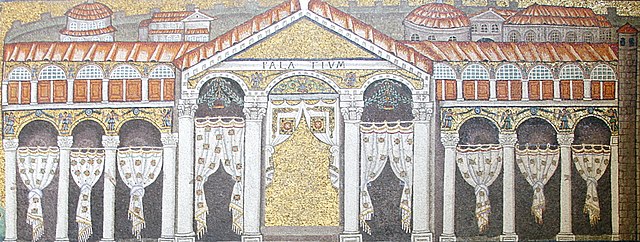Amalasuintha was a ruler of the Ostrogothic Kingdom from 526 to 535. Initially serving as regent for her son Athalaric, she became queen after his premature death. Highly educated, Amalasuintha was praised by both Cassiodorus and Procopius for her wisdom and her ability to speak three languages. Her status as an independent female monarch, and obvious affinity for Roman culture, caused discontent among the Gothic nobles in her court, and she was deposed and killed after six months of sole rule.
Bust at the Capitoline Museums, assumed to depict Queen Amalasuintha
Consular diptych of Rufius Gennadius Probus Orestes, Victoria and Albert museum. Portraits of Amalasuintha and her son Athalaric are above the inscription, flanking the cross.
Amalasiuntha regina – woodcut from the Nuremberg Chronicle (1493)
The Ostrogothic Kingdom, officially the Kingdom of Italy, existed under the control of the Germanic Ostrogoths in Italy and neighbouring areas from 493 to 553.
Ostrogothic Kingdom
Epigraph originally placed at the Pavia amphitheater in which the restorations carried out between 528 and 529 by Athalaric at the amphitheater are mentioned, Pavia Civic Museums.
The Palace of Theodoric, as depicted on the walls of St. Apollinare Nuovo. The figures between the columns, representing Theodoric and his court, were removed after the East Roman conquest.






